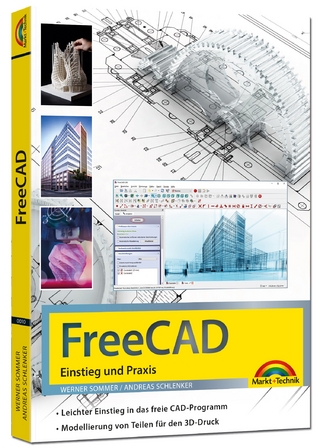
Field Models in Electricity and Magnetism
Springer (Verlag)
978-90-481-7735-6 (ISBN)
1 Introduction
2 Vector fields
2.1 Basic operators and equations
2.1.1 Vector fields and operators
2.1.2 Definition of a vector field
2.1.3 Decomposition of a field
2.1.4 Scalar and vector potentials
2.1.5 Green’s theorem
2.1.6 Green’s formula
2.2 Electrostatic field
2.2.1 Maxwell’s equations for electrostatics
2.2.2 Electrostatic potentials
2.2.3 Electrostatic energy
2.2.4 Field of a charged plane (rectangular domain)
2.2.5 Field of a point charge in R3 (spherical domain)
2.2.6 Field of a dipole of moment d q p = in R3
2.2.7 Field of a line charge in R3 (cylindrical domain)
2.2.8 Field of a surface charge on a sphere of radius a with density s
2.2.9 Energy and forces in the electrostatic field
2.2.10 Force between the plates of a capacitor
2.2.11 Force at the interface between two dielectric materials
2.3 Magnetostatic field
2.3.1 Maxwell’s equations for magnetostatics
2.3.2 Magnetostatic potentials
2.3.3 Magnetostatic energy
2.3.4 Field of a line current in R3
2.3.5 Energy and forces in the magnetostatic field
2.3.6 Force on an electromagnet
2.3.7 Test problems
2.4 Steady conduction field
2.4.1 Maxwell’s equations for conduction field
2.4.2 Potentials
2.4.3 Power loss
2.4.4 Analytic functions of complex variable
2.4.5 Field of a cylindrical conductor in R3
3 Analytical methods of solving boundary value problems
3.1 Method of Green’s functions
3.1.1 Green’s formula for electrostatics
3.1.2 Field of a point charge q surrounded by a sphere of radius a with U = 0
3.1.3 Field of a point charge q surrounded by a sphere of radius a with U = k
3.1.4 Field of a surface dipole distributed on a sphere of radius a with dipole densityt
3.1.5 Green’s formula for two-dimensional magnetostatics
3.2 Method of images
3.2.1 Magnetic field of a line current in a slot
3.2.2 Magnetic field of an AC line current over a conducting half-space
3.3 Method of separation of variables
3.3.1 Magnetic field of a current uniformly distributed in a slot
4 Numerical methods of solving boundary value problems
4.1 Variational formulation in magnetostatics
4.2 Finite elements for two-dimensional magnetostatics
4.2.1 Discretization of energy functional
4.2.2 Local shape functions
4.2.3 Coefficient matrix and source vector
4.2.4 From potential to field
4.2.5 Magnetic field in a slot solved by the finite element method
4.3 Finite elements for three-dimensional magnetostatics
5 Time-varying electromagnetic field
5.1 Maxwell’s equations in differential form
5.2 Poynting’s vector
5.3 Maxwell’s equations in frequency domain
5.4 Plane waves in an infinite domain
5.5 Wave and diffusion equations in terms of vectors E and H
5.6 Wave and diffusion equations in terms of scalar and vector potentials
5.7 Electromagnetic field radiated by an oscillating dipole
5.8 Diffusion equations in terms of dual potentials
5.9 Weak eddy current in a conducting plane under a.c. conditions
5.10 Strong eddy current in a conducting plane under a.c. conditions
5.11 Eddy current in a cylindrical conductor under step excitation
5.12 Electromagnetic field equations in different reference frames
6 Inverse problems
6.1 Direct and inverse problems
6.2 Well-posed and ill-posed problems
6.3 Fredholm’s integral equation of the first kind
6.4 Case study: synthesis of magnetic field sources
6.5 Under- and over-determined systems of equations
6.6 Least-squaressolution
6.7 Classification of inverse problems
7 Optimization
7.1 Solution of inverse problems by the minimization of a functional
7.2 Constrained optimization
7.3 Gradient–free and gradient-based methods
7.4 Deterministic vs non-deterministic search
7.5 A deterministic algorithm of lowest order: simplex method
7.6 A non-deterministic algorithm of lowest order: evolution strategy
7.7 Numerical case studies
7.7.1 Identification of B-H curve of the iron region of a magnetic pole
7.7.2 Shape design of a magnetic pole (static optimisation)
7.7.3 Shape design of a magnetic pole (dynamic optimisation)
7.7.4 A multiobjective approach to the shape design of a magnetic pole
| Zusatzinfo | X, 174 p. |
|---|---|
| Verlagsort | Dordrecht |
| Sprache | englisch |
| Maße | 155 x 235 mm |
| Themenwelt | Informatik ► Grafik / Design ► Digitale Bildverarbeitung |
| Informatik ► Theorie / Studium ► Künstliche Intelligenz / Robotik | |
| Informatik ► Weitere Themen ► CAD-Programme | |
| Naturwissenschaften ► Physik / Astronomie ► Elektrodynamik | |
| Naturwissenschaften ► Physik / Astronomie ► Optik | |
| Naturwissenschaften ► Physik / Astronomie ► Thermodynamik | |
| Technik ► Elektrotechnik / Energietechnik | |
| ISBN-10 | 90-481-7735-9 / 9048177359 |
| ISBN-13 | 978-90-481-7735-6 / 9789048177356 |
| Zustand | Neuware |
| Informationen gemäß Produktsicherheitsverordnung (GPSR) | |
| Haben Sie eine Frage zum Produkt? |
aus dem Bereich


